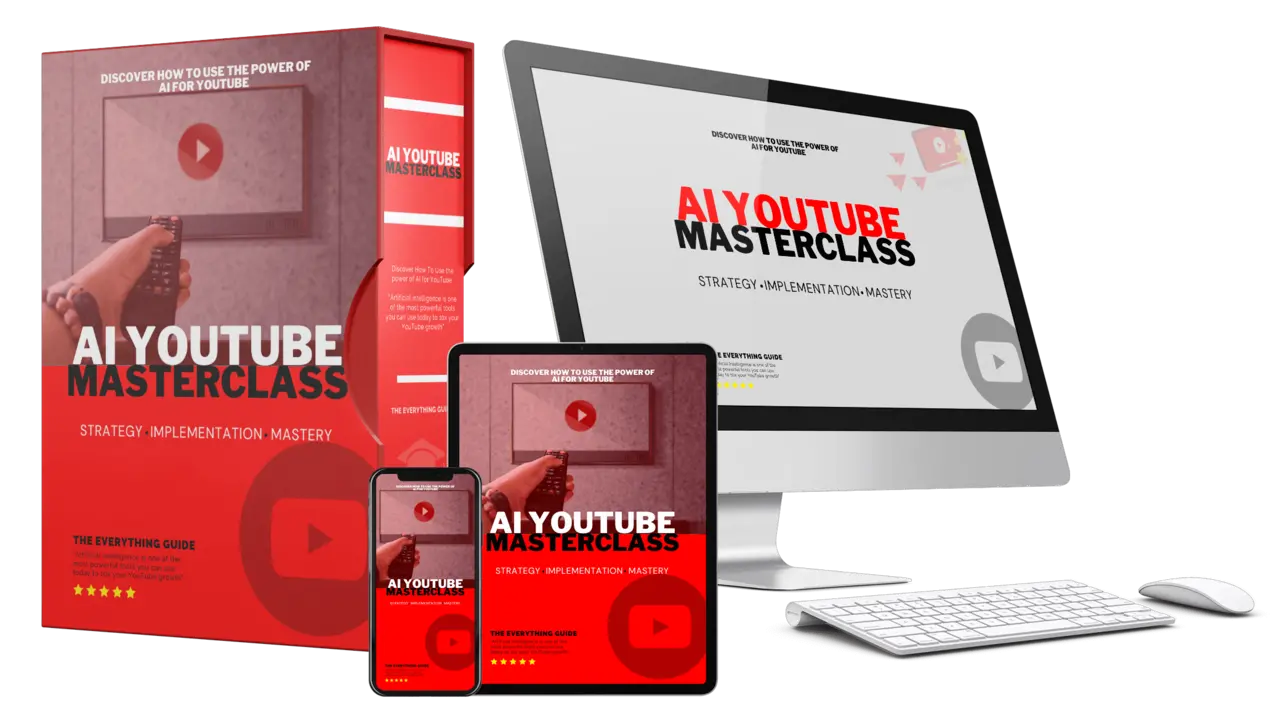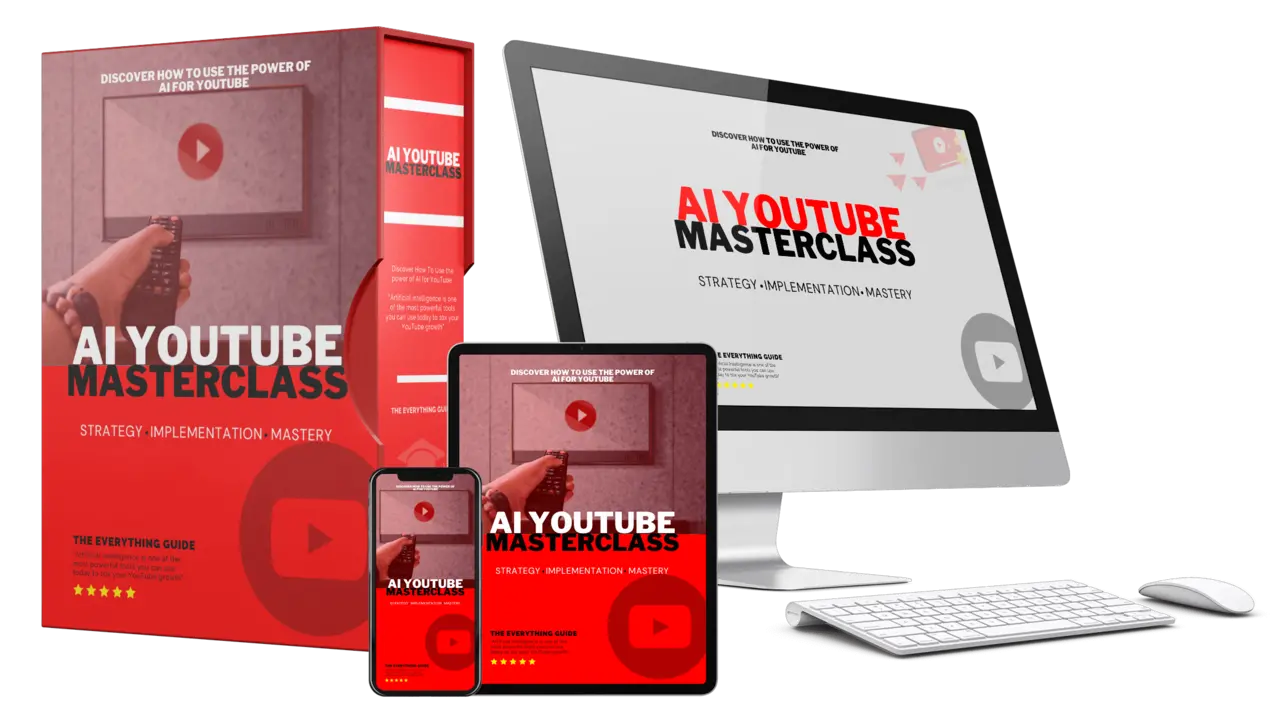Repugnant Trump PRO-VAX and PRO-ZIONISTS! - VT Foreign Policy
March 29, 2024
VT Condemns the ETHNIC CLEANSING OF PALESTINIANS by USA/Israel
$ 280 BILLION US TAXPAYER DOLLARS INVESTED since 1948 in US/Israeli Ethnic Cleansing and Occupation Operation; $ 150B direct "aid" and $ 130B in "Offense" contracts
Source: Embassy of Israel, Washington, D.C. and US Department of State.
By Fabio Giusepe Carlo Carisio
VERSIONE IN ITALIANO
«The Pandemic no longer controls our lives. The Vaccines that saved us from COVID are now being used to help beat Cancer – Turning setback into comeback!” YOU’RE WELCOME, JOE, NINE MONTH APPROVAL TIME VS. 12 YEARS THAT IT WOULD HAVE TAKEN YOU!»
Trump’s Pro-VAX Propaganda for Big Pharma Money
This is what we read in a post published in recent days by Donald Trump, the only Republican candidate remaining in the running for the US Presidential Elections of November 2020, relaunched by the attentive analyst of the problems of mRNA genetic serums Igor Chudov who limited himself to a laconic comment.
«In the TruthSocial post above, Trump mentioned his nine-month approval time for Covid vaccines.I am frankly shocked by the stupidity of both statements.The vaccines did not “save us from the pandemic” – they made the pandemic worse. And being proud that such vaccines were pushed through in just nine months is perhaps a bit misguided».
Trump’s embarrassing post was immediately contested by one of his followers
Chudov’s comment was far too pitiful. Trump, who poses as an anti-system fighter, hits the ground running by relaunching propaganda on vaccines while completely ignoring three crucial elements:
the SARS-Cov-2 pandemic was created in the laboratory in a deal between CHINA and the USA (with the help of the EU and the United Kingdom) as reported by the late biologist Luc Montagnier and his biomathematician friend Jean-Claude Perez, confirmed by dozens of scientific studies and finally also supported by the US Senate Health Committee led by a Republican
there is evidence that Moderna patented its anti-Covid vaccine 9 months before the discovery of the Wuhan outbreak in collaboration with the virologist Anthony Fauci and with funding from the Pentagon’s DARPA military agency provided by the Obama-Biden administration
Suspicious Turbo-Cancer from Vaccines for Wales Princess Kate. Devastating Toll of VIPs Ill or Dead from Tumors after Genetic Serums
mRNA gene sera are causing a myriad of adverse reactions, including serious and lethal ones, precisely because they are based on the artificial manipulation of proteins and molecules that interact in a devastating way with the natural immune system of human beings
finally, these Covid vaccines have been identified as the main culprits in the degeneration of the Turbo-Cancer phenomenon, so much so that a doctor suffering from a tumor acted as a guinea pig for the new anti-Cancer vaccine in a grotesque spiral with the stench of transhumanism.
TRANSHUMANIST BIOMEDICINE! World 1st mRNA Cancer Vaccine to treat a Brain Turbo-Cancer from mRNA Covid
After 4 years and tens of thousands of deaths after reports of unwanted effects related to Covid vaccines, the former president seems not to want to make a “mea culpa” for the management of the pandemic left in the hands of the terrorist Fauci (former NIAID director but also consultant of the White House on the Covid emergency) nor question the work of Moderna (which benefited from the Warp Speed contribution provided by the Trump administration) and Pfizer, which refused the help but in return financed an avalanche of senators and Republican deputies.
The impression is that he is looking for sponsors among Big Pharma…
DA PFIZER SOLDI PURE AI PROCURATORI USA! Lobbying da 1milione di Dollari alla Conference Attorneys General. Altri 8 a 1.842 Politici Bipartisan
Lolling in wavering positions like a drunken elephant, after pretending to ride the battle against Big Pharma of Florida governor Ron DeSantis and surgeon general Joseph A. Ladapo who called for a stop to all mRNA serums precisely because they can cause cancer, now reveals his idolatry towards one of the fundamental components of the global immunization plan launched by Bill Gates and the Rockefeller Foundation way back in 1999 in Italy and then culminated in a pandemic “planned for decades” as declared by Robert F-Kennedy jr and demonstrated by patent expert David Martin but above all detailed by the 74 investigations of the WuhanGates cycle by Gospa News.
BOMBSHELL! Florida State Surgeon General Calls for Halt of COVID MRNA Vaccines due to Dangerous, Oncogenes DNA Fragments
Believing that voters are drunk on ignorance like him, however, he is countered by one of his followers who gained 2.59 Likes, 10% of those of Trump’s post.
This would be enough to make it clear that the former president is hypocrisy personified.
Donny’s Connections to the Weapons Lobby
But since we have followed him since he had the US Navy launch 100 Tomahawk missiles on Syria in retaliation for the chemical attack in Douma attributed to Assad’s army but which turned out to be a “false flag” of the jihadists of Al Nusra with the complicity of the White Helmets trained by British intelligence, we know well the international damage it has done.
Especially in Venezuela, triggering electromagnetic sabotage against President Maduro and consequent lethal blackouts interrupted only by the intervention of Russian experts.
Il presidente Donald Trump ad un vertice internazionale accanto al ceo di BlackRock Larry Fink
In the first Weapons Lobby investigation we published a photo of Trump smiling next to Larry Fink, the Zionist financier from New York who founded BlackRock, shareholder of the main warlord corporations but also of Big Pharma.
Trump’s policy in the Middle East allowed Israeli Prime Minister Benjamin Netanyahu to build a Zionist dictatorship in his country and lay the foundations for the latest devastating war in Gaza which turned into a systematic and premeditated genocide.
And in fact the former MAGA president who fell like a fish in a barrel into the Capitol Hill trap on January 6, 2021, never misses an opportunity to reiterate his support for the Zionists.
Support for the Israeli Zionists of the Gaza Genocide
Here is what he recently wrote from the international newspaper Politico:
The Biden campaign and allied Democratic groups swiftly denounced Donald Trump on Monday after the former president told a conservative radio host that Jews who vote Democratic were sacrilegious.
The comments from Trump came during an interview with Sebastian Gorka, his one time campaign aide, who pressed him on criticism prominent Democrats have had for Israeli Prime Minister Benjamin Netanyahu during the Israel-Hamas war.
Paradoxically, at the very moment in which Biden is trying to distance himself from the massacre of Palestinians aimed at depopulating the Gaza Strip, Trump strengthens his extremist positions thus becoming a fan of that New World Order of Masonic and Zionist origin which through Tel Aviv aims to take control of the Mediterranean Sea with the complicity of a NATO that almost seems like a supporting player.
Toward another Zionist Massacre in Gaza Strip: Netanyahu approves Rafah Operation Plan
Unfortunately too many people in Italy too are blinded by the image of Donny as the only opponent of NWO and Biden, but they have not understood that he is also the son of that same evil bipartisan alliance of Big Pharma and the Weapons Lobby which has imposition in its sights of military dictatorships for “inevitable wars” and who knows how many new “laboratory” pandemics for other compulsory vaccination campaigns.
WEAPONS LOBBY – 15. Kiev War: Gold Mine for NATO’s Merchants of Death. German Industry aims New Plants in Ukraine
Trump is nothing more than the right-wing – almost extreme – counterpart of his rival.
Indeed, given his different size, he could become a grotesque sarcophagus if, with the help of the Zionist lobbies, he won the challenge for the White House.
Subscribe to the Gospa News Newsletter to read the news as soon as it is published
Fabio Giuseppe Carlo Carisio
© COPYRIGHT GOSPA NEWS
prohibition of reproduction without authorization
follow Fabio Carisio Gospa News director on Twitter
follow Gospa News on Telegram
MAIN SOURCES
GOSPA NEWS – COVID-19 DOSSIER
GOSPA NEWS – WUHAN-GATES DOSSIER
BLACKROCK “KILLED” CARLSON FOR VACCINES & WEAPONS BUSINESS. The Fund of WEF’s Zionist King owns Big Part of Fox News
WUHAN-GATES – 62. MANMADE SARS-Cov-2 FOR GOLDEN VACCINES: Metabiota, CIA, Biden, Gates, Rockefeller intrigued in Ukraine, China and Italy
WUHAN-GATES – 74. The Greatest Story Never Told: German Virology in China and Montana
“Soros” French Judges want to Arrest Assad for Douma Chemical Attack despite it was White Helmets False-Flag
Venezuela: Guaido’s Friends ParaMilitary Narcos Tied to Italian Mafia but Trump charges Maduro
WEAPONS LOBBY – REPORT 1: The Us Corporations shareholders
Gaza, Donbass, Syria: GENOCIDES of the Zionist, Nazi, Jihadist Regimes is US-NATO’s “New” Geopolitical WEAPON
UPDATE – Fauci’s Testimony before US Congress: “Pandemic from Lab Leak is not a Conspiracy Theory”.
Fabio G. C. Carisio
Fabio is investigative journalist since 1991. Now geopolitics, intelligence, military, SARS-Cov-2 manmade, NWO expert and Director-founder of Gospa News: a Christian Information Journal.
His articles were published on many international media and website as SouthFront, Reseau International, Sputnik Italia, United Nation Association Westminster, Global Research, Kolozeg and more…
Most popolar investigation on VT is:
Rumsfeld Shady Heritage in Pandemic: GILEAD’s Intrigues with WHO & Wuhan Lab. Bio-Weapons’ Tests with CIA & Pentagon
Fabio Giuseppe Carlo Carisio, born on 24/2/1967 in Borgosesia, started working as a reporter when he was only 19 years old in the alpine area of Valsesia, Piedmont, his birth region in Italy. After studying literature and history at the Catholic University of the Sacred Heart in Milan, he became director of the local newspaper Notizia Oggi Vercelli and specialized in judicial reporting.
For about 15 years he is a correspondent from Northern Italy for the Italian newspapers Libero and Il Giornale, also writing important revelations on the Ustica massacre, a report on Freemasonry and organized crime.
With independent investigations, he collaborates with Carabinieri and Guardia di Finanza in important investigations that conclude with the arrest of Camorra entrepreneurs or corrupt politicians.
In July 2018 he found the counter-information web media Gospa News focused on geopolitics, terrorism, Middle East, and military intelligence.
In 2020 published the book, in Italian only, WUHAN-GATES – The New World Order Plot on SARS-Cov-2 manmade focused on the cycle of investigations Wuhan-Gates
His investigations was quoted also by The Gateway Pundit, Tasnim and others
He worked for many years for the magazine Art & Wine as an art critic and curator.
VETERANS TODAY OLD POSTS
www.gospanews.net/
ATTENTION READERS
We See The World From All Sides and Want YOU To Be Fully Informed
In fact, intentional disinformation is a disgraceful scourge in media today. So to assuage any possible errant incorrect information posted herein, we strongly encourage you to seek corroboration from other non-VT sources before forming an educated opinion.
About VT - Policies & Disclosures - Comment Policy
Due to the nature of uncensored content posted by VT's fully independent international writers, VT cannot guarantee absolute validity. All content is owned by the author exclusively. Expressed opinions are NOT necessarily the views of VT, other authors, affiliates, advertisers, sponsors, partners, or technicians. Some content may be satirical in nature. All images are the full responsibility of the article author and NOT VT.
https://www.vtforeignpolicy.com/2024/03/repugnant-trump-pro-vax-and-pro-zionists/Repugnant Trump PRO-VAX and PRO-ZIONISTS! - VT Foreign Policy
March 29, 2024
VT Condemns the ETHNIC CLEANSING OF PALESTINIANS by USA/Israel
$ 280 BILLION US TAXPAYER DOLLARS INVESTED since 1948 in US/Israeli Ethnic Cleansing and Occupation Operation; $ 150B direct "aid" and $ 130B in "Offense" contracts
Source: Embassy of Israel, Washington, D.C. and US Department of State.
By Fabio Giusepe Carlo Carisio
VERSIONE IN ITALIANO
«The Pandemic no longer controls our lives. The Vaccines that saved us from COVID are now being used to help beat Cancer – Turning setback into comeback!” YOU’RE WELCOME, JOE, NINE MONTH APPROVAL TIME VS. 12 YEARS THAT IT WOULD HAVE TAKEN YOU!»
Trump’s Pro-VAX Propaganda for Big Pharma Money
This is what we read in a post published in recent days by Donald Trump, the only Republican candidate remaining in the running for the US Presidential Elections of November 2020, relaunched by the attentive analyst of the problems of mRNA genetic serums Igor Chudov who limited himself to a laconic comment.
«In the TruthSocial post above, Trump mentioned his nine-month approval time for Covid vaccines.I am frankly shocked by the stupidity of both statements.The vaccines did not “save us from the pandemic” – they made the pandemic worse. And being proud that such vaccines were pushed through in just nine months is perhaps a bit misguided».
Trump’s embarrassing post was immediately contested by one of his followers
Chudov’s comment was far too pitiful. Trump, who poses as an anti-system fighter, hits the ground running by relaunching propaganda on vaccines while completely ignoring three crucial elements:
the SARS-Cov-2 pandemic was created in the laboratory in a deal between CHINA and the USA (with the help of the EU and the United Kingdom) as reported by the late biologist Luc Montagnier and his biomathematician friend Jean-Claude Perez, confirmed by dozens of scientific studies and finally also supported by the US Senate Health Committee led by a Republican
there is evidence that Moderna patented its anti-Covid vaccine 9 months before the discovery of the Wuhan outbreak in collaboration with the virologist Anthony Fauci and with funding from the Pentagon’s DARPA military agency provided by the Obama-Biden administration
Suspicious Turbo-Cancer from Vaccines for Wales Princess Kate. Devastating Toll of VIPs Ill or Dead from Tumors after Genetic Serums
mRNA gene sera are causing a myriad of adverse reactions, including serious and lethal ones, precisely because they are based on the artificial manipulation of proteins and molecules that interact in a devastating way with the natural immune system of human beings
finally, these Covid vaccines have been identified as the main culprits in the degeneration of the Turbo-Cancer phenomenon, so much so that a doctor suffering from a tumor acted as a guinea pig for the new anti-Cancer vaccine in a grotesque spiral with the stench of transhumanism.
TRANSHUMANIST BIOMEDICINE! World 1st mRNA Cancer Vaccine to treat a Brain Turbo-Cancer from mRNA Covid
After 4 years and tens of thousands of deaths after reports of unwanted effects related to Covid vaccines, the former president seems not to want to make a “mea culpa” for the management of the pandemic left in the hands of the terrorist Fauci (former NIAID director but also consultant of the White House on the Covid emergency) nor question the work of Moderna (which benefited from the Warp Speed contribution provided by the Trump administration) and Pfizer, which refused the help but in return financed an avalanche of senators and Republican deputies.
The impression is that he is looking for sponsors among Big Pharma…
DA PFIZER SOLDI PURE AI PROCURATORI USA! Lobbying da 1milione di Dollari alla Conference Attorneys General. Altri 8 a 1.842 Politici Bipartisan
Lolling in wavering positions like a drunken elephant, after pretending to ride the battle against Big Pharma of Florida governor Ron DeSantis and surgeon general Joseph A. Ladapo who called for a stop to all mRNA serums precisely because they can cause cancer, now reveals his idolatry towards one of the fundamental components of the global immunization plan launched by Bill Gates and the Rockefeller Foundation way back in 1999 in Italy and then culminated in a pandemic “planned for decades” as declared by Robert F-Kennedy jr and demonstrated by patent expert David Martin but above all detailed by the 74 investigations of the WuhanGates cycle by Gospa News.
BOMBSHELL! Florida State Surgeon General Calls for Halt of COVID MRNA Vaccines due to Dangerous, Oncogenes DNA Fragments
Believing that voters are drunk on ignorance like him, however, he is countered by one of his followers who gained 2.59 Likes, 10% of those of Trump’s post.
This would be enough to make it clear that the former president is hypocrisy personified.
Donny’s Connections to the Weapons Lobby
But since we have followed him since he had the US Navy launch 100 Tomahawk missiles on Syria in retaliation for the chemical attack in Douma attributed to Assad’s army but which turned out to be a “false flag” of the jihadists of Al Nusra with the complicity of the White Helmets trained by British intelligence, we know well the international damage it has done.
Especially in Venezuela, triggering electromagnetic sabotage against President Maduro and consequent lethal blackouts interrupted only by the intervention of Russian experts.
Il presidente Donald Trump ad un vertice internazionale accanto al ceo di BlackRock Larry Fink
In the first Weapons Lobby investigation we published a photo of Trump smiling next to Larry Fink, the Zionist financier from New York who founded BlackRock, shareholder of the main warlord corporations but also of Big Pharma.
Trump’s policy in the Middle East allowed Israeli Prime Minister Benjamin Netanyahu to build a Zionist dictatorship in his country and lay the foundations for the latest devastating war in Gaza which turned into a systematic and premeditated genocide.
And in fact the former MAGA president who fell like a fish in a barrel into the Capitol Hill trap on January 6, 2021, never misses an opportunity to reiterate his support for the Zionists.
Support for the Israeli Zionists of the Gaza Genocide
Here is what he recently wrote from the international newspaper Politico:
The Biden campaign and allied Democratic groups swiftly denounced Donald Trump on Monday after the former president told a conservative radio host that Jews who vote Democratic were sacrilegious.
The comments from Trump came during an interview with Sebastian Gorka, his one time campaign aide, who pressed him on criticism prominent Democrats have had for Israeli Prime Minister Benjamin Netanyahu during the Israel-Hamas war.
Paradoxically, at the very moment in which Biden is trying to distance himself from the massacre of Palestinians aimed at depopulating the Gaza Strip, Trump strengthens his extremist positions thus becoming a fan of that New World Order of Masonic and Zionist origin which through Tel Aviv aims to take control of the Mediterranean Sea with the complicity of a NATO that almost seems like a supporting player.
Toward another Zionist Massacre in Gaza Strip: Netanyahu approves Rafah Operation Plan
Unfortunately too many people in Italy too are blinded by the image of Donny as the only opponent of NWO and Biden, but they have not understood that he is also the son of that same evil bipartisan alliance of Big Pharma and the Weapons Lobby which has imposition in its sights of military dictatorships for “inevitable wars” and who knows how many new “laboratory” pandemics for other compulsory vaccination campaigns.
WEAPONS LOBBY – 15. Kiev War: Gold Mine for NATO’s Merchants of Death. German Industry aims New Plants in Ukraine
Trump is nothing more than the right-wing – almost extreme – counterpart of his rival.
Indeed, given his different size, he could become a grotesque sarcophagus if, with the help of the Zionist lobbies, he won the challenge for the White House.
Subscribe to the Gospa News Newsletter to read the news as soon as it is published
Fabio Giuseppe Carlo Carisio
© COPYRIGHT GOSPA NEWS
prohibition of reproduction without authorization
follow Fabio Carisio Gospa News director on Twitter
follow Gospa News on Telegram
MAIN SOURCES
GOSPA NEWS – COVID-19 DOSSIER
GOSPA NEWS – WUHAN-GATES DOSSIER
BLACKROCK “KILLED” CARLSON FOR VACCINES & WEAPONS BUSINESS. The Fund of WEF’s Zionist King owns Big Part of Fox News
WUHAN-GATES – 62. MANMADE SARS-Cov-2 FOR GOLDEN VACCINES: Metabiota, CIA, Biden, Gates, Rockefeller intrigued in Ukraine, China and Italy
WUHAN-GATES – 74. The Greatest Story Never Told: German Virology in China and Montana
“Soros” French Judges want to Arrest Assad for Douma Chemical Attack despite it was White Helmets False-Flag
Venezuela: Guaido’s Friends ParaMilitary Narcos Tied to Italian Mafia but Trump charges Maduro
WEAPONS LOBBY – REPORT 1: The Us Corporations shareholders
Gaza, Donbass, Syria: GENOCIDES of the Zionist, Nazi, Jihadist Regimes is US-NATO’s “New” Geopolitical WEAPON
UPDATE – Fauci’s Testimony before US Congress: “Pandemic from Lab Leak is not a Conspiracy Theory”.
Fabio G. C. Carisio
Fabio is investigative journalist since 1991. Now geopolitics, intelligence, military, SARS-Cov-2 manmade, NWO expert and Director-founder of Gospa News: a Christian Information Journal.
His articles were published on many international media and website as SouthFront, Reseau International, Sputnik Italia, United Nation Association Westminster, Global Research, Kolozeg and more…
Most popolar investigation on VT is:
Rumsfeld Shady Heritage in Pandemic: GILEAD’s Intrigues with WHO & Wuhan Lab. Bio-Weapons’ Tests with CIA & Pentagon
Fabio Giuseppe Carlo Carisio, born on 24/2/1967 in Borgosesia, started working as a reporter when he was only 19 years old in the alpine area of Valsesia, Piedmont, his birth region in Italy. After studying literature and history at the Catholic University of the Sacred Heart in Milan, he became director of the local newspaper Notizia Oggi Vercelli and specialized in judicial reporting.
For about 15 years he is a correspondent from Northern Italy for the Italian newspapers Libero and Il Giornale, also writing important revelations on the Ustica massacre, a report on Freemasonry and organized crime.
With independent investigations, he collaborates with Carabinieri and Guardia di Finanza in important investigations that conclude with the arrest of Camorra entrepreneurs or corrupt politicians.
In July 2018 he found the counter-information web media Gospa News focused on geopolitics, terrorism, Middle East, and military intelligence.
In 2020 published the book, in Italian only, WUHAN-GATES – The New World Order Plot on SARS-Cov-2 manmade focused on the cycle of investigations Wuhan-Gates
His investigations was quoted also by The Gateway Pundit, Tasnim and others
He worked for many years for the magazine Art & Wine as an art critic and curator.
VETERANS TODAY OLD POSTS
www.gospanews.net/
ATTENTION READERS
We See The World From All Sides and Want YOU To Be Fully Informed
In fact, intentional disinformation is a disgraceful scourge in media today. So to assuage any possible errant incorrect information posted herein, we strongly encourage you to seek corroboration from other non-VT sources before forming an educated opinion.
About VT - Policies & Disclosures - Comment Policy
Due to the nature of uncensored content posted by VT's fully independent international writers, VT cannot guarantee absolute validity. All content is owned by the author exclusively. Expressed opinions are NOT necessarily the views of VT, other authors, affiliates, advertisers, sponsors, partners, or technicians. Some content may be satirical in nature. All images are the full responsibility of the article author and NOT VT.
https://www.vtforeignpolicy.com/2024/03/repugnant-trump-pro-vax-and-pro-zionists/










